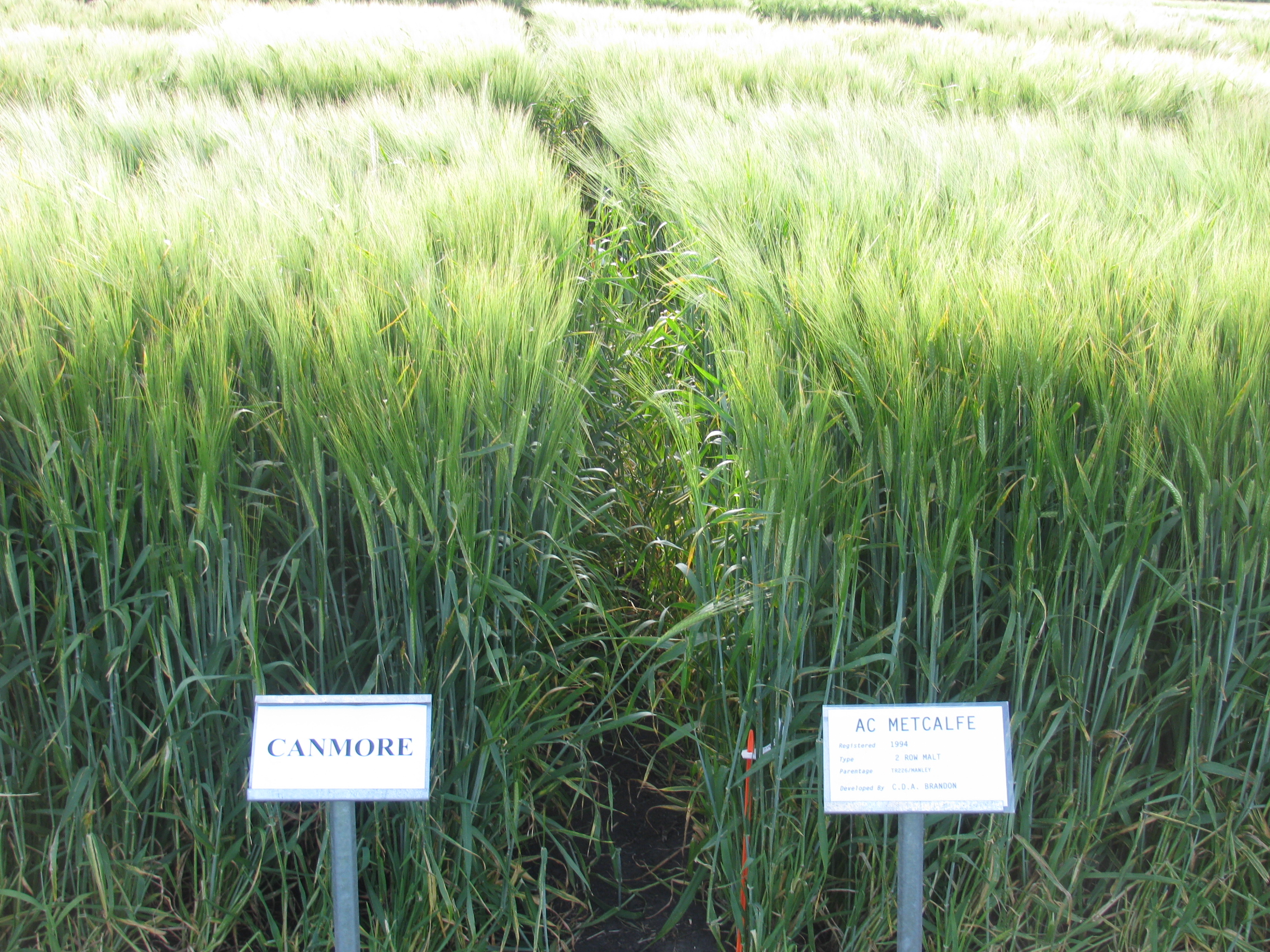Canmore
| Denomination: | 'Canmore' |
|---|---|
| Botanical Name: | Hordeum vulgare |
| Applicant/Holder: |
Alberta Agriculture and Irrigation Crop Assurance and Rural Programming Branch 1st Floor, 7000-113 Street Edmonton, Alberta T6H 5T6 Canada |
| Breeder: |
Patricia Juskiw, Alberta Agriculture and Forestry, Lacombe, Alberta |
| Agent in Canada: |
Canterra Seeds 201-1475 Chevrier Boulevard Winnipeg, Manitoba R3T 1Y7 Canada Tel: 204-988-4685 |
| Application Date: | 2013-05-10(priority claimed) |
| Application Number: | 13-8040 |
| Protective direction granted: | 2013-05-10 |
| Grant of Rights Date: | 2016-02-04 |
| Certificate Number: | 5237 |
| Grant of Rights Termination Date: | 2036-02-04 |
Variety Description
Variety used for comparison: 'AC Metcalfe'
Summary: At booting, the frequency of plants with recurved flag leaves is high in 'Canmore' whereas it is low in 'AC Metcalfe'. The anthocyanin colouration of the auricles on the flag leaf and at the tip of the lemma awns are of weak intensity on 'Canmore' whereas they are very weak on 'AC Metcalfe'. The spikes of 'Canmore' emerge mid-season whereas those of 'AC Metcalfe' emerge early.
Description:
PLANT: two row, spring barley, spike emergence occurs mid-season
YOUNG PLANT: erect growth habit at tillering, absent or very sparse pubescence on the lower leaf sheaths
FLAG LEAF: high frequency of plants with recurved flag leaves, sparse pubescence on blade
FLAG LEAF SHEATH: weak glaucosity, sparse pubescence
AURICLES: weak intensity of anthocyanin colouration, sparse pubescence on the margins
SPIKE: weak glaucosity, erect attitude, v-shaped collar, tapering shape, medium density, divergent attitude of sterile spikelet, glume and awn of the median spikelet are shorter than the length of the grain
LEMMA AWNS: weak intensity of anthocyanin colouration of the tips, longer than length of spike, rough margins along the entire length
FIRST SEGMENT OF RACHIS: medium length, medium curvature
KERNEL: absent or very weak anthocyanin colouration of nerves of the lemma at early to soft dough stage, whitish aleurone layer, long rachilla hairs, husk present, weak spiculation of inner lateral nerves of dorsal side of lemma, no hairiness of ventral furrow, clasping disposition of lodicules, horseshoe shape basal markings, medium length and width
AGRONOMIC CHARACTERISTICS: fair resistance to lodging, good resistance to shattering
Origin & Breeding History: 'Canmore' (experimental designations 'J02039005' and 'TR10694') originated from the cross between 'H92013289Z' and 'TR656' made in 2002 at the Field Crop Development Centre, Lacombe, Alberta using a single seed descent method. In 2003, approximately 240 heads from the F2 bulk grown in Lacombe were planted in growth facilities where the F3 and F4 generation plants were advanced in the single seed descent during the winter of 2003-2004. In the spring of 2004, heads were selected from this population and grown out as individual F5 head rows from which a line named 'J02039005' was selected to be entered into yield trial testing from 2005 to 2012. Purification of this line also took place during this time with 200 Breeder lines being bulked at the F11 level to form Breeder seed. The variety was tested in the Western Two Row Barley Cooperative Tests in 2010 as 'TR10694'. Selection criteria included grain yield, test weight, 1000 kernel weight, lodging resistance, disease resistance, maturity and food quality.
Tests & Trials: The comparative trials conducted during the summers of 2013 and 2014 at the Alberta Field Crop Development Centre in Lacombe, Alberta were planted in a RCB design and consisted of 3 replicates for each variety. Each 4.2 metres squared plots consisted of 8 rows 3.8 metres in length with a row spacing of 0.14 metres. The seeding density was 235 seeds per square metre.
Click on image for larger view

Barley: 'Canmore' (left) with reference variety 'AC Metcalfe' (right)
- Date modified: